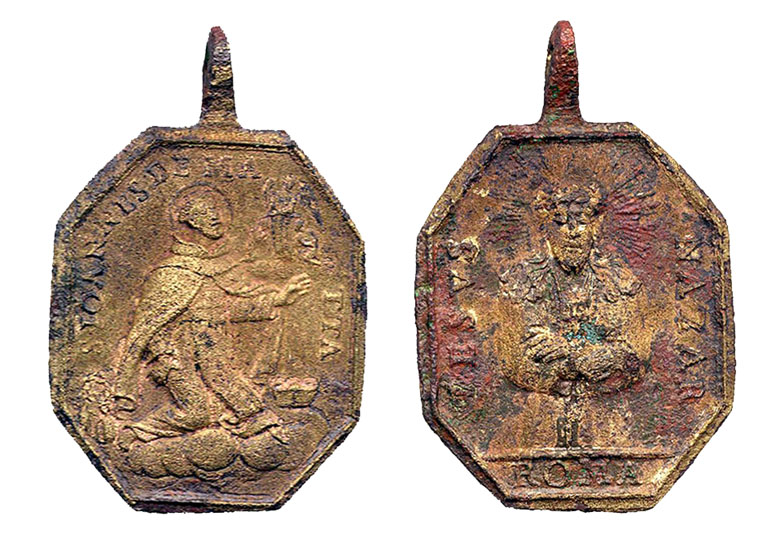
This religious medallion was recovered from the base of a cooking pit in the Southeastern House Complex (see House of the Curandera), where it appears to have been deliberately placed as part of a ritual offering that included a brass wick trimmer, a glass trade bead, and egg shell fragments.
St. John of Matha is shown on one side of the medallion, while Jesus of Nazareth is depicted on the other. This medallion was probably made in Rome, indicated by the inscription –ROMA.”
St. John of Matha (1169-1213) was canonized in 1655. He is the patron saint of prisoners and is best known for his efforts to free Christian slaves taken by the Turks in the 12th and 13th centuries. Shackles are depicted in the lower left portion of the medallion, and in the upper right portion, an angel is shown with two prisoners or slaves. The latter represents a vision experienced by St. John of Matha when he celebrated his first mass.
The presence of an ornament honoring the patron saint of prisoners at Los Adaes makes sense. Many of the soldiers who took part in the expedition that established Presidio Los Adaes in 1721 were recruited from jails in north-central New Spain. Archival documents also show that at least two African slaves from French Louisiana took temporary refuge at Los Adaes, and it is possible that the medallion was last used in a ritual intended to protect these slaves.